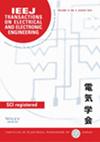求助PDF
{"title":"基于Petri网的制造过程柔性资源分配双仿真与四色定理","authors":"Shanchen Pang, Yuntao Fan, Min Wang","doi":"10.1002/tee.70061","DOIUrl":null,"url":null,"abstract":"<p>Flexible resources, as key resources with flexibility and schedulability in the event of demand changes, and their targeted allocation to specific manufacturing cells are of great significance in the manufacturing process. Petri net is a discrete graphical modeling tool which can visualize the relationships and flows between the manufacturing processes and resource allocations. The flexible adaptation and extension capabilities of Petri net can accurately describe the resource flows in resource allocation processes. At the same time, the combination of Petri nets and bisimulation methods allows the construction of simulation processes that require qualitative allocation of flexible resources, which ensures that resource flows are accurately allocated into specific manufacturing cells. This paper aims to model how the four-color theorem and the Petri net based bisimulation approach can be fully combined to simulate a subnet composed of manufacturing units where flexible resources need to be allocated in a targeted and private manner. In this paper, we apply the four-color theorem as a theory tool to combine with Petri net based bisimulation to ensure resource independences and privacies among manufacturing units in the flexible resource allocation. The Petri net modeling with the four-color theorem is proposed, and definitions of Petri net based bisimulation with non-interference combining with the four-color theorem are given. We also give the mathematical proofs and validations for BNDPN with the Four-Color Theorem. Furthermore, we evaluate the performance of the strategy of BNDPN with the Four-Color Theorem in flexible resource allocation and compare the evaluation results with existing works. © 2025 Institute of Electrical Engineers of Japan and Wiley Periodicals LLC.</p>","PeriodicalId":13435,"journal":{"name":"IEEJ Transactions on Electrical and Electronic Engineering","volume":"20 11","pages":"1717-1729"},"PeriodicalIF":1.1000,"publicationDate":"2025-07-04","publicationTypes":"Journal Article","fieldsOfStudy":null,"isOpenAccess":false,"openAccessPdf":"","citationCount":"0","resultStr":"{\"title\":\"Petri Net Based Bisimulation and Four-Color Theorem for Flexible Resource Allocation in Manufacturing Processes\",\"authors\":\"Shanchen Pang, Yuntao Fan, Min Wang\",\"doi\":\"10.1002/tee.70061\",\"DOIUrl\":null,\"url\":null,\"abstract\":\"<p>Flexible resources, as key resources with flexibility and schedulability in the event of demand changes, and their targeted allocation to specific manufacturing cells are of great significance in the manufacturing process. Petri net is a discrete graphical modeling tool which can visualize the relationships and flows between the manufacturing processes and resource allocations. The flexible adaptation and extension capabilities of Petri net can accurately describe the resource flows in resource allocation processes. At the same time, the combination of Petri nets and bisimulation methods allows the construction of simulation processes that require qualitative allocation of flexible resources, which ensures that resource flows are accurately allocated into specific manufacturing cells. This paper aims to model how the four-color theorem and the Petri net based bisimulation approach can be fully combined to simulate a subnet composed of manufacturing units where flexible resources need to be allocated in a targeted and private manner. In this paper, we apply the four-color theorem as a theory tool to combine with Petri net based bisimulation to ensure resource independences and privacies among manufacturing units in the flexible resource allocation. The Petri net modeling with the four-color theorem is proposed, and definitions of Petri net based bisimulation with non-interference combining with the four-color theorem are given. We also give the mathematical proofs and validations for BNDPN with the Four-Color Theorem. Furthermore, we evaluate the performance of the strategy of BNDPN with the Four-Color Theorem in flexible resource allocation and compare the evaluation results with existing works. © 2025 Institute of Electrical Engineers of Japan and Wiley Periodicals LLC.</p>\",\"PeriodicalId\":13435,\"journal\":{\"name\":\"IEEJ Transactions on Electrical and Electronic Engineering\",\"volume\":\"20 11\",\"pages\":\"1717-1729\"},\"PeriodicalIF\":1.1000,\"publicationDate\":\"2025-07-04\",\"publicationTypes\":\"Journal Article\",\"fieldsOfStudy\":null,\"isOpenAccess\":false,\"openAccessPdf\":\"\",\"citationCount\":\"0\",\"resultStr\":null,\"platform\":\"Semanticscholar\",\"paperid\":null,\"PeriodicalName\":\"IEEJ Transactions on Electrical and Electronic Engineering\",\"FirstCategoryId\":\"5\",\"ListUrlMain\":\"https://onlinelibrary.wiley.com/doi/10.1002/tee.70061\",\"RegionNum\":4,\"RegionCategory\":\"工程技术\",\"ArticlePicture\":[],\"TitleCN\":null,\"AbstractTextCN\":null,\"PMCID\":null,\"EPubDate\":\"\",\"PubModel\":\"\",\"JCR\":\"Q4\",\"JCRName\":\"ENGINEERING, ELECTRICAL & ELECTRONIC\",\"Score\":null,\"Total\":0}","platform":"Semanticscholar","paperid":null,"PeriodicalName":"IEEJ Transactions on Electrical and Electronic Engineering","FirstCategoryId":"5","ListUrlMain":"https://onlinelibrary.wiley.com/doi/10.1002/tee.70061","RegionNum":4,"RegionCategory":"工程技术","ArticlePicture":[],"TitleCN":null,"AbstractTextCN":null,"PMCID":null,"EPubDate":"","PubModel":"","JCR":"Q4","JCRName":"ENGINEERING, ELECTRICAL & ELECTRONIC","Score":null,"Total":0}
引用次数: 0
引用
批量引用


 求助内容:
求助内容: 应助结果提醒方式:
应助结果提醒方式:


